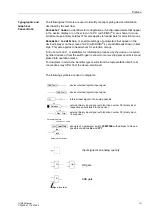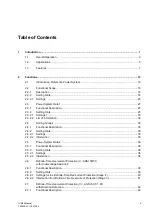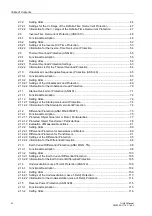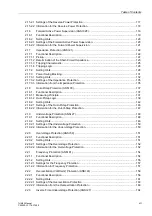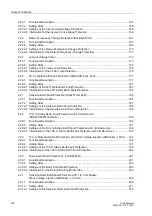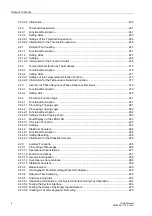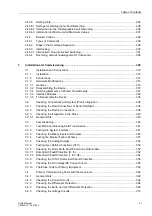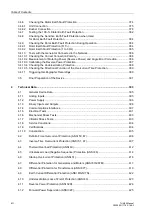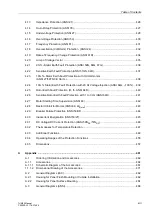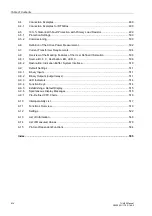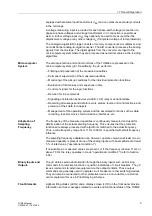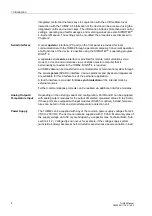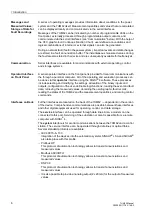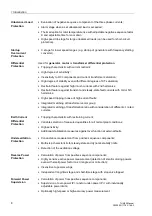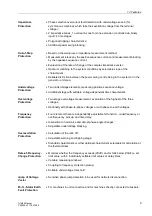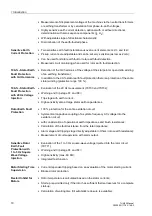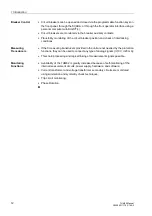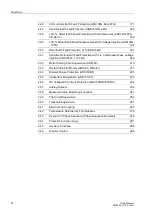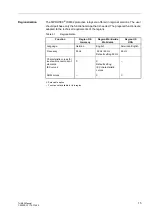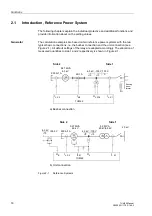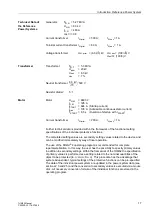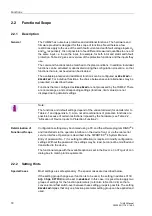
1.1 Overall Operation
3
7UM62 Manual
C53000-G1176-C149-3
equipped with sensitive input transformers (I
EE
) and can measure secondary currents
in the mA range.
A voltage measuring input is provided for each phase-earth voltage (connection to
phase-to-phase voltages and voltage transformers in V connection is possible as
well). A further voltage input (U
N
) may optionally be used to measure either the
displacement voltage or any other voltage U
X
(for injected voltage of rotor protection).
The analog-to-digital (AD) stage consists of memory components, a multiplexer, and
an multichannel analog-to-digital converter. The A/D converter processes the analog
signals from the IA stage. The digital signals from the converter are input to the
microcomputer system where they are processed as numerical values in the residing
algorithms.
Microcomputer
System
The actual protection and control functions of the 7UM62 are processed in the
microcomputer system (µC). Specifically, the µC performs:
−
Filtering and preparation of the measured quantities
−
Permanent supervision of the measured quantities
−
Monitoring of the pickup conditions for the individual protection functions
−
Evaluation of limit values and sequences in time
−
Control of signals for the logic functions
−
Decision for trip commands
−
Signalling of protection behaviour via LED, LCD, relay or serial interface
−
Recording of messages and data for events, alarms, faults, and control actions, and
provision of their data for analysis
−
Management of the operating system and the associated functions such as data
recording, real-time clock, communications, interfaces, etc.
Adaptation of
Sampling
Frequency
The frequency of the measured quantities is continuously measured and used for
determination of the actual sampling frequency. This ensures that the protection
functions are always processed with algorithms matched to the actual frequency.
Thus, a wide frequency range from 11 Hz to 69 Hz is specified with small frequency
influence.
The sampling frequency adaptation can, however, operate only when at least one a.c.
measured quantity is present at one of the analog inputs, with an amplitude of at least
5 % of rated value (“operational condition 1”).
If no suitable a.c. measured values are present, or if the frequency is below 11 Hz or
above 70 Hz, the relay operates in mode “operational condition 0” (refer to Section
4.34).
Binary Inputs and
Outputs
The µC obtains external information through the binary inputs such as blocking
commands for protective functions or position indications of circuit breakers. The µC
issues commands to external equipment via the output contacts. These output
commands are generally used to operate circuit breakers or other switching devices.
They can also be connected to other protective devices, annunciators, or external
carrier equipment for use in Pilot-Relaying schemes.
Front Elements
Light-emitting diodes (LEDs) and a display screen (LCD) on the front panel provide
information such as messages related to events and functional status of the 7UM62.

